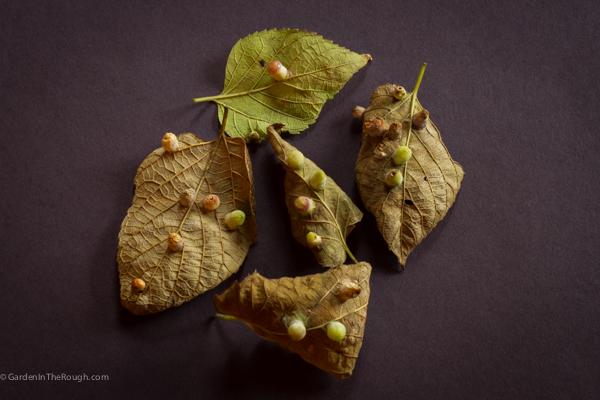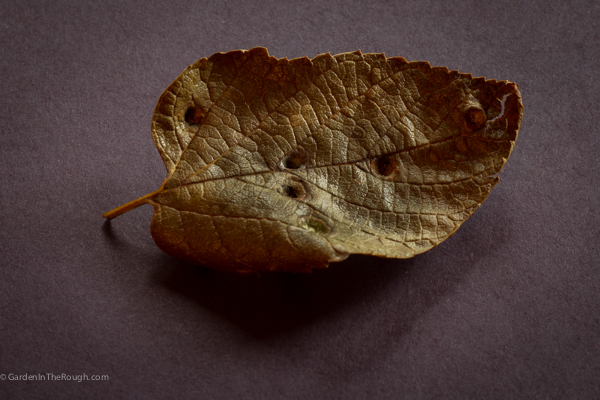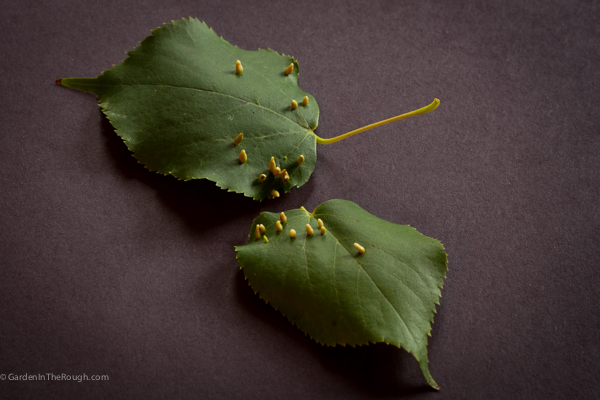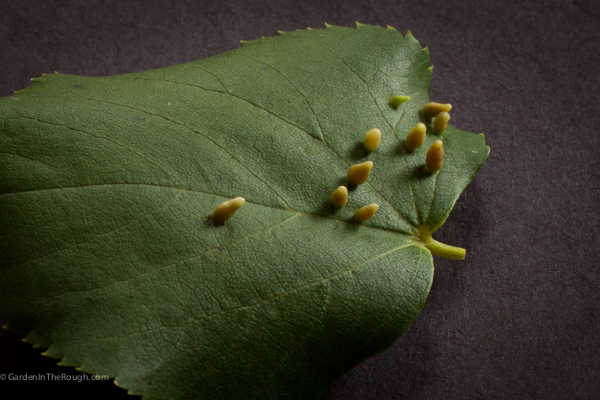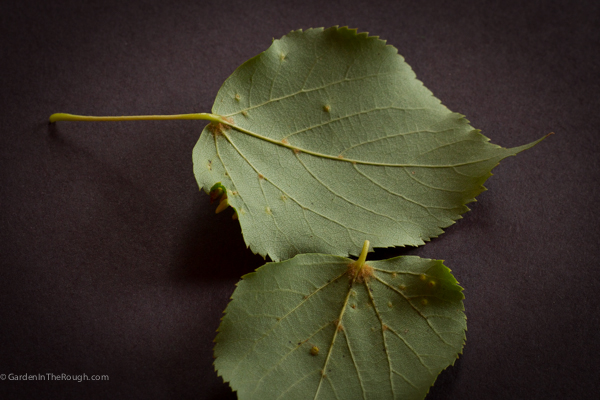I found these leaves on trees growing in my neighborhood. The photos were taken in early November. The bumps on the leaves are known as leaf galls. According to the American Heritage® Science Dictionary, a gall is defined as “an abnormal swelling of plant tissue, caused by injury or by parasitic organisms such as insects, mites, nematodes, and bacteria. Parasites stimulate the production of galls by secreting chemical irritants on or in the plant tissue. Galls stimulated by egg-laying parasites typically provide a protective environment in which the eggs can hatch and the pupae develop, and they usually do only minor damage to the host plant. Gall-stimulating fungi and microorganisms, such as the bacterium that causes crown gall, are generally considered to be plant diseases.”1
What I find interesting about galls is that they look very different from the leaf, but they are formed by normal leaf cells that have gone awry. The parasite releases chemicals that cause the leaf cells to grow aberrantly and form the gall. In turn, the gall may provide the parasite with a source of nutrients and protection from harsh environmental conditions. Galls may also protect the parasites from natural enemies, produce antimicrobial agents,2 and release volatile compounds that deter herbivorous mammals.3
There are hundreds of gall-forming organisms. The photos shown above are just two examples of leaf galls. Despite their unusual appearance, galls generally are not thought to be harmful to the plant. More information on leaf galls and other types of galls may be obtained from a local university extension. I found the publication by Mark Shour and colleagues from the Iowa State University Extension to be particularly informative.4
- Gall. Dictionary.com. The American Heritage® Science Dictionary. Houghton Mifflin Company. http://dictionary.reference.com/browse/gall (accessed: November 27, 2013).
- Gerchman Y, Inbar M. Distinct antimicrobial activities in aphid galls on Pistacia atlantica. Plant Signal Behav. 2011 Dec;6(12):2008-12. Available at: http://www.ncbi.nlm.nih.gov/pmc/articles/PMC3337195/
- Rostás M, Maag D, Ikegami M, Inbar M. Gall volatiles defend aphids against a browsing mammal. BMC Evol Biol. 2013 Sep 11;13:193. Available at: http://www.biomedcentral.com/1471-2148/13/193.
- Shour M, Jesse L, Lewis D. Insect galls on trees and shrubs. Available at: http://www.extension.iastate.edu/publications/ic417.pdf

